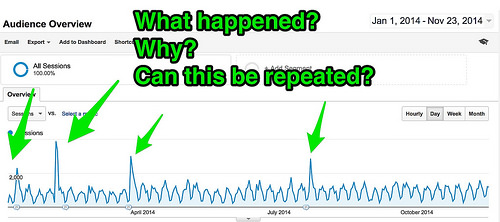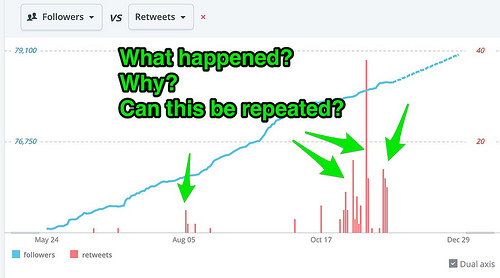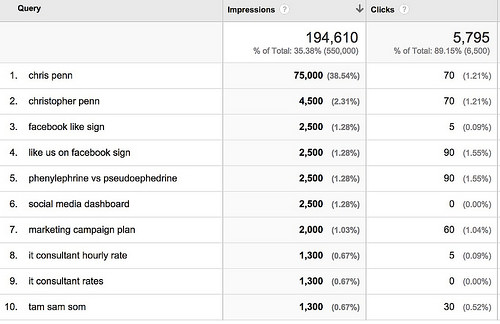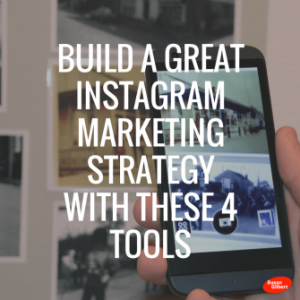As marketers, PR professionals, and advertisers begin to wind down the year (save for those in retail who are firing on all cylinders right now), one of the top things you’ll focus on in 2014 is reviewing the numbers. There will be countless Powerpoint slide decks of charts, graphs, graphs of charts, charts of graphs, and bullet points galore. However, all of this data processing may not necessarily lead to any insights or any strategic changes; in many cases, we’ll be publishing massive quantities of shelfware that will go unseen.
How do you avoid this problem? How do you make all of that analysis effort and time worthwhile? How do you use the data to make changes in your business and marketing that are meaningful in 2015?
Let’s give you a strategy that’s centered around three questions that are the core of the Marketing DAIS:
- What happened?
- Why?
- Can this be repeated?
When you’re looking at the data for 2014 in order to formulate ideas for 2015, start by looking for outliers. Look for unusual events that are worth noting, spikes in your data that clearly stand out. Here’s an example from web analytics:

Look at those four standout events that are above and beyond normal traffic. What caused those events? Are they things that were coincidental, are they things that were real-time marketing (and thus cannot be relied on to occur again), or are they things that you have control over and thus can revisit or build upon?
If I dig into this particular chart, those spikes were caused by four big media hits. The first was our Top 50 Most Overused Words in Press Releases for 2013. That’s repeatable, and we’ll be revisiting that again this coming year. The second was a Super Bowl ad. That’s repeatable in theory, but it was the result of a mistake that didn’t generate any tangible business results, so we won’t repeat that. The third spike is from our Facebook Page Cost Calculator. That’s worth revisiting and upgrading, especially in the wake of the latest Facebook algorithm changes. The fourth spike was from Scott Monty joining the company, which is not a repeatable event, and thus we can’t count on it in the coming year or add it to our playbook.
Now we have an idea of what’s repeatable and what’s not, which can help to plan our editorial calendar, content marketing, public relations program, and paid media plans.
Here’s another example using Twitter analytics and statistics:

Again, ask the same three questions:
- What happened?
- Why?
- Can this be repeated?
When I look at the spike of retweets that occurred on November 10, I found that it was relating to a piece of real-time news that I had retweeted. You can’t bank on that news re-occurring again, so we relegate it to “nice to have, but not forecastable”. On the other hand, the spike in retweets that occurred a few days earlier was around a blog post titled “Everything is Measurable in PR.” That’s an indicator that the post topic might be a hot topic worth building on in future posts.
Suppose you’re trying to formulate a 2015 SEO strategy. Look at the top terms in your search queries:
Ask the same three questions:
- What happened?
- Why?
- Can this be repeated?
We can see what happened. Are those terms you meant to be ranking for? Are they part and parcel of your content marketing strategy? If you didn’t actively create content around these, why did they happen? If you did create content around these terms and they’re driving traffic to your site, consider doubling down on those topics to see if you can repeat the successes you’ve had.
As you look to your data from 2014 and look ahead at the road to 2015, bring the Marketing DAIS to your investigation. You’ll extract more useful analyses, insights, and strategic changes than just pouring lots of data on your desk and hoping it speaks to you. Start by investigating your outliers to find out what can be repeated and what can’t, and build on that for your 2015 marketing plan!
Digital & Social Articles on Business 2 Community
(318)







